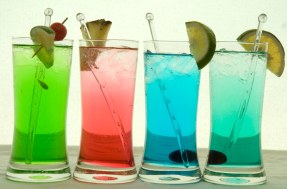Feb.17: FOOD AND HEALTH
Toxins in your plate!
Chemical or biological contaminants can creep into food at any stage from farm to fork. This article describes the various possible toxins in your everyday diet.
Iron filings in tea
Tea leaves are cut using iron rollers which tend to leave behind traces of iron filings in tea powder. Manufacturers typically remove these filings using magnets, but particles often get left behind. An iron overload can cause upset stomach, organ damage and even death. The Food Safety and Standards Authority of India (FSSAI) recently increased the permissible limit for iron particles in tea powder to 250 mg/kg from 150 mg/kg. Why?
Animal residue in silver leaf
The chandi ka varq on sweets, spices such as cardamom and paan, is often made by rolling and hammering silver between sheets of animal intestines. Recently, FSSAI banned the use of animal parts in the manufacturing of silver leaf. It also fixed limits for thickness, weight and purity of silver to prevent toxic aluminum foil from being used as silver leaf.
Antibiotics in chicken
In 2014, Centre for Science and Environment (CSE) found antibiotic residue in chicken samples collected from Delhi-NCR. Some of the antibiotics present are used to treat infections of the urinary tract, respiratory tract (like pneumonia), eye and ear, blood stream, diarrhea and tuberculosis. Exposure to these antibiotics in food can result in anti-microbial resistance.
Chemicals in fruit
In India, the use of calcium carbide to induce ripening of fruits is banned and offenders are liable to face a six-month imprisonment and fine. However, calcium carbide, commonly called masala, is still widely used. Calcium carbide is carcinogenic and can cause mouth ulcers, gastric irritation, food poisoning and death.
Artificial colours in drinks
Food dyes are one of the most widely used and dangerous additives. Your favourite funky blue cocktail could be damaging your brain and kidneys. Experts say blue colour is known to cross the blood-brain barrier and cause permanent damage over time. Similarly, red and green colours are known to cause tumours in the bladder and testes and yellow can trigger hyperactivity in children.
Aluminium phosphide in rice tablets
Rice tablets are commonly used as a fumigant across India. They contain aluminium phosphide, which can lead to poisoning if ingested, or if the tablets crumble, as they contain mercury. They crumble if they are not manufactured according to stipulated rules and regulations. This can poison all the rice in a sack.
Chalk and water in milk
A recent study by the Maharashtra Food and Drug Administration found that 20% of milk sold in the state continues to be adulterated. Milk can be adulterated with water, chalk, urea, soap and other whiteners. Adding chalk results in a build-up of calcium, which can cause kidney stones. If the water that is added is not from a clean source it could have pathogenic micro-organisms.
Sources: Hindustan Times, ibtimes, Daily Post, Tribune India, www.mercola.com





